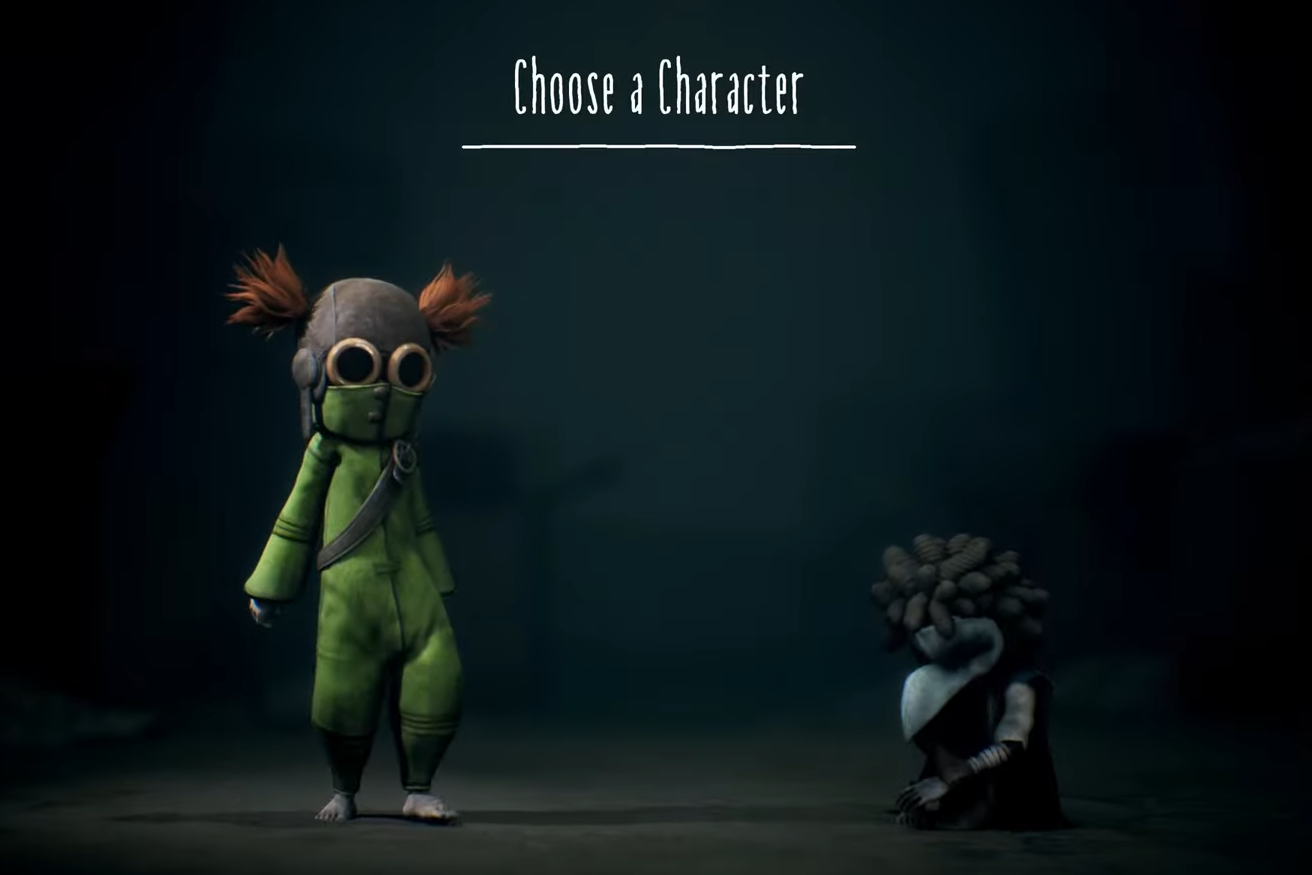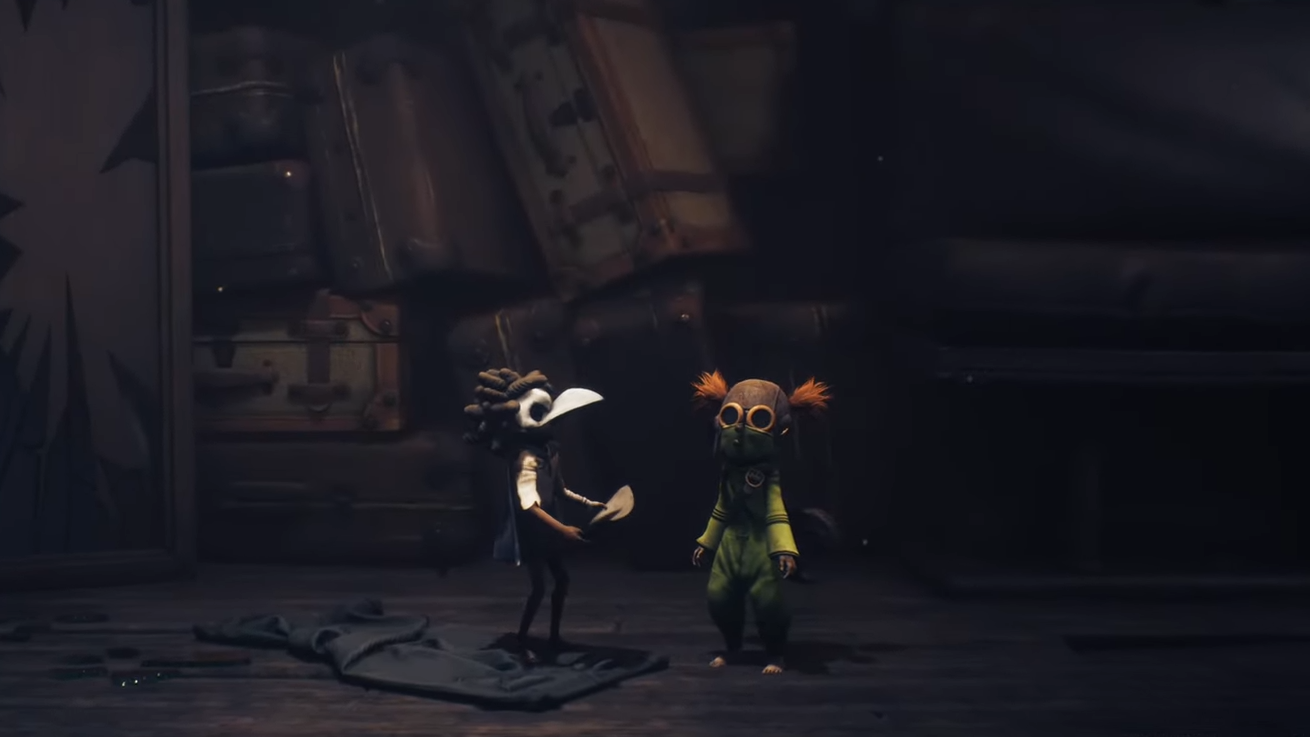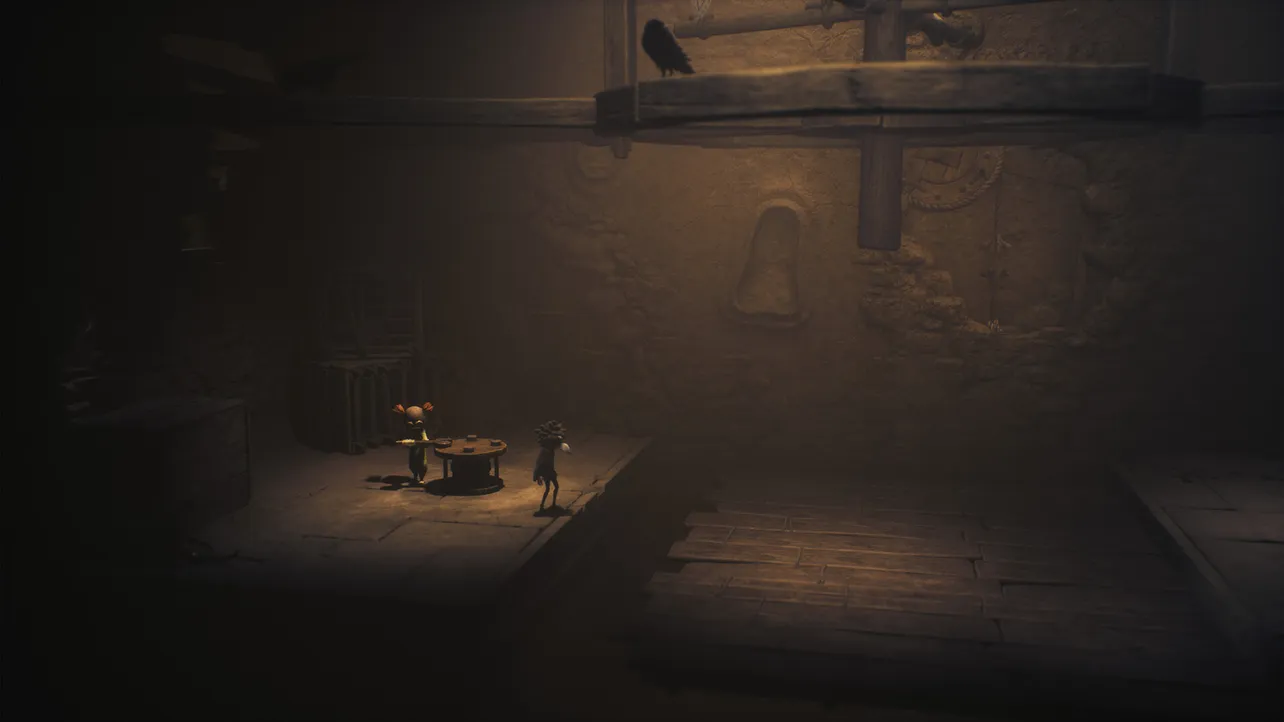Little Nightmares 3 opens with a simple but permanent choice: control Low or Alone. Both protagonists move and explore similarly, but their tools split the work of puzzles and skirmishes in distinct ways. If you’re deciding for a solo run or coordinating with a co-op partner, here’s how each character plays and when one makes more sense than the other.

Low vs. Alone gameplay differences
| Character | How to spot them on the select screen | Signature tool | Puzzle interactions | Combat role | Best for players who… |
|---|---|---|---|---|---|
| Low | Raven-like mask (crow skull) | Bow and arrow | Shoots ropes and far switches; the bow auto-locks valid targets like buttons and frayed lines | Ranged opener that brings enemies down; often acts first and stays exposed longer | Prefer engaging at range, initiating encounters, and taking the higher-risk, higher-impact role |
| Alone | Pigtails and goggles | Heavy wrench | Turns mechanisms, smashes fragile walls, and interacts with large, physical contraptions | Melee finisher that closes the distance after Low’s setup | Like up-close, precise timing without initiating; want a steadier, less stressful combat loop |
Both characters are required at set moments and often perform actions in tandem. The bow’s reach gives Low more puzzle flexibility across distances, while Alone’s wrench leans into brute-force solutions and gearwork the bow can’t touch.

Solo play: which character to pick
If you’re playing alone with the AI partner, pick based on the moment-to-moment role you want:
- Choose Low if you want to drive encounters and solve more distance-based puzzles. Low’s toolkit tends to put him in the lead during fights and traversal setups.
- Choose Alone if you prefer a calmer rhythm in combat. Direct contact with enemies triggers an immediate failure, and Alone’s job is typically to deliver the finishing blow after the target is already grounded.
Story beats and cutscenes skew toward Low, especially early on, so a first playthrough as Low aligns cleanly with how the narrative is framed. Many players then run a second playthrough as Alone to see the duo’s dynamic from the other side (and to cover trophy/achievement requirements that ask you to use both characters across saves).
Co-op play: how to split roles
In online co-op, you can’t swap characters mid-save, so match preferences up front:
- Player who likes initiating and ranged timing: Low.
- Player who prefers melee timing and closing: Alone.
Both players contribute meaningfully. Many set pieces require simultaneous actions—think Low opening space or disabling a threat so Alone can operate a mechanism or finish the fight.
How character choice affects the story
Your pick doesn’t change core plot events, but the camera and cutscenes tend to spotlight Low more often. Playing as Low in a first run gives you the clearest framing of key reveals; switching to Alone later can make certain moments land differently simply because you’re positioned as the supporting half of the duo.
Cosmetics and identifying characters on the select screen
- Selection portraits don’t display names. The child in the raven mask is Low; the girl with pigtails and goggles is Alone.
- Cosmetic outfits are available for both characters, and you can customize their looks regardless of which one you control.
Can you switch characters mid-save?
No. Once you start a save, your choice is locked for that file. To switch, start a new save and select the other character. The campaign’s length makes a second run manageable, and it’s the straightforward way to see how the other toolkit changes pacing in puzzles and combat.
Bottom line: pick Low if you want to initiate and carry the ranged workload—especially for a first solo run where the story framing favors him. Pick Alone if you prefer melee timing with less pressure to start fights. In co-op, assign Low to the player who wants to set the table and Alone to the player who wants to finish the job, then plan a second run to swap roles.

